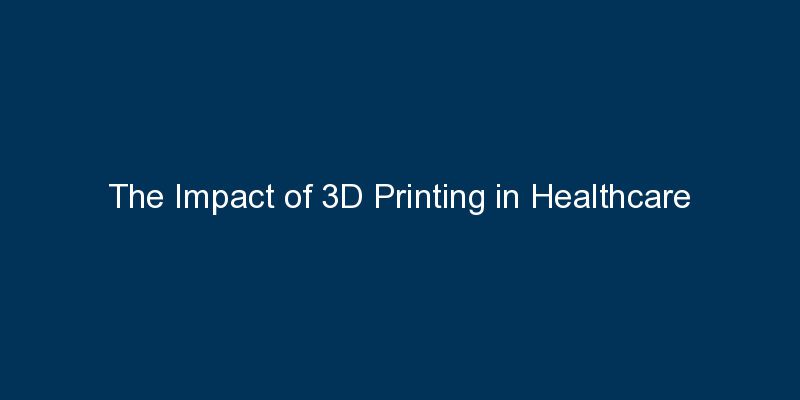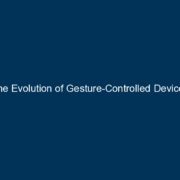In recent years, the healthcare industry has witnessed a revolutionary transformation with the integration of 3D printing technology. This cutting-edge innovation has not only changed the way medical professionals approach treatment but has also opened up new possibilities for personalized and efficient healthcare solutions. In this blog, we will delve into the significant impact of 3D printing in healthcare, exploring its applications, benefits, and future potential.
Understanding 3D Printing in Healthcare
Medical Models for Precision
3D printing has revolutionized the way medical professionals plan and execute surgeries. Surgeons can now create precise, patient-specific 3D models of organs or body parts, allowing them to visualize and practice complex procedures before the actual operation. This level of precision reduces the risk of errors and enhances the overall success rates of surgeries.
Customized Prosthetics and Implants
One of the most notable applications of 3D printing in healthcare is the creation of customized prosthetics and implants. Traditional prosthetics were often uncomfortable and lacked a personalized fit. With 3D printing, prosthetics can be tailored to an individual’s unique anatomy, providing better comfort and functionality. Similarly, implants, such as dental implants and joint replacements, can be custom-designed to match the patient’s specific requirements.
Enhancing Medical Research and Education
Advanced Medical Research
3D printing has become an invaluable tool in medical research. Researchers can now create realistic models of organs and tissues, enabling them to conduct experiments and tests more accurately. This has significantly accelerated the pace of medical discoveries and the development of new treatments.
Educational Advancements
In medical education, 3D printing has transformed the learning experience for students and professionals alike. Detailed anatomical models can be produced, offering a hands-on approach to studying the human body. This immersive learning experience enhances understanding and retention, ultimately contributing to the training of more competent healthcare professionals.
The Economic Impact of 3D Printing in Healthcare
Cost-Effective Prototyping
Traditionally, creating prototypes for medical devices or instruments was a time-consuming and expensive process. With 3D printing, the cost and time involved in prototyping have been significantly reduced. This has paved the way for more innovation in the development of medical tools and equipment.
Reducing Healthcare Costs
The customization capabilities of 3D printing contribute to more efficient treatments, ultimately reducing long-term healthcare costs. Personalized prosthetics and implants, for instance, may require fewer adjustments over time, minimizing the need for costly follow-up procedures. This economic efficiency is a crucial aspect of the broader impact of 3D printing on the healthcare industry.
Challenges and Future Prospects
While the impact of 3D printing in healthcare is profound, challenges still exist. Regulatory frameworks and standardization are essential to ensure the safety and efficacy of 3D-printed medical devices. Additionally, the technology needs to become more accessible to healthcare facilities worldwide.
Future Potential
The future of 3D printing in healthcare holds exciting possibilities. Researchers are exploring the potential to print functional organs for transplantation, a development that could address the organ shortage crisis. Moreover, ongoing advancements in materials and printing techniques are likely to expand the scope of 3D printing applications in the medical field.
Conclusion
In conclusion, the impact of 3D printing in healthcare is transformative and far-reaching. From personalized medical models for surgical planning to customized prosthetics and implants, this technology has enhanced patient care, advanced medical research, and even contributed to economic efficiency in the healthcare sector. As the technology continues to evolve, the healthcare industry can expect even more groundbreaking developments, solidifying 3D printing as a cornerstone of modern healthcare practices.



















Comments